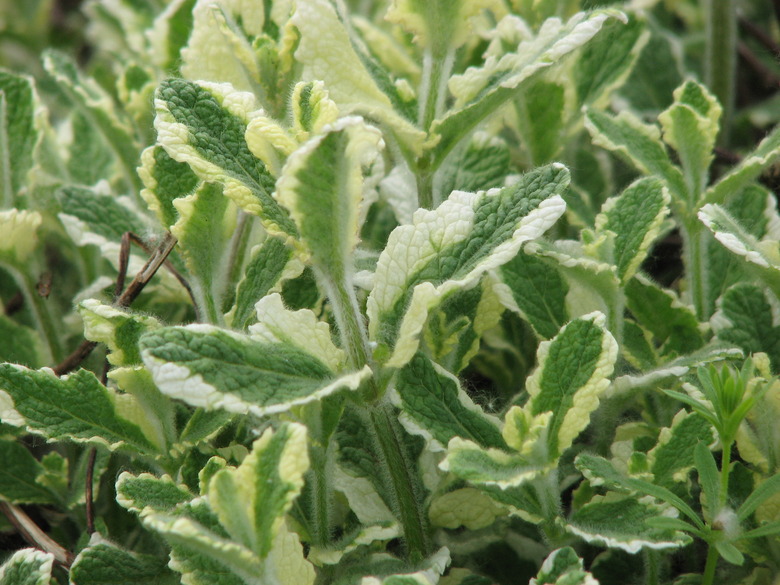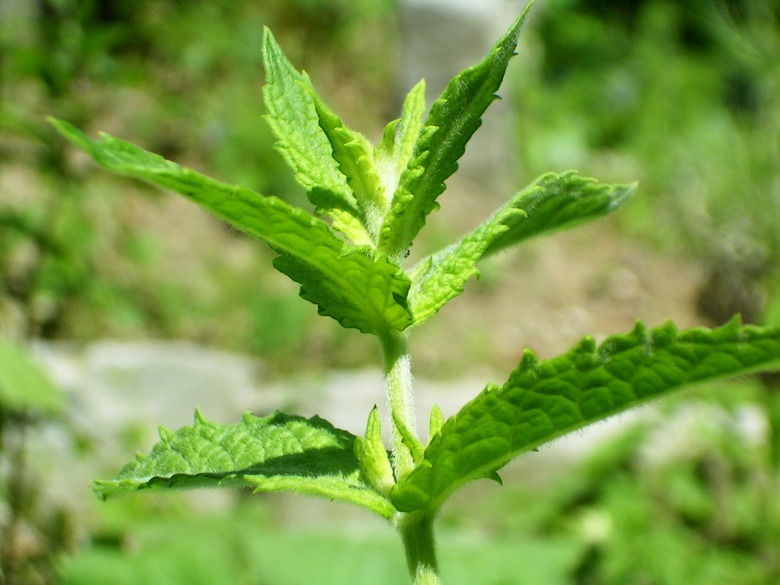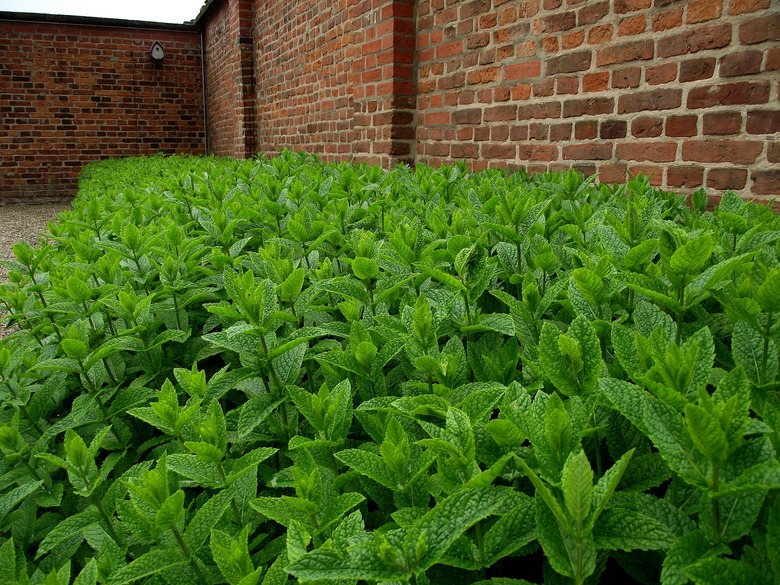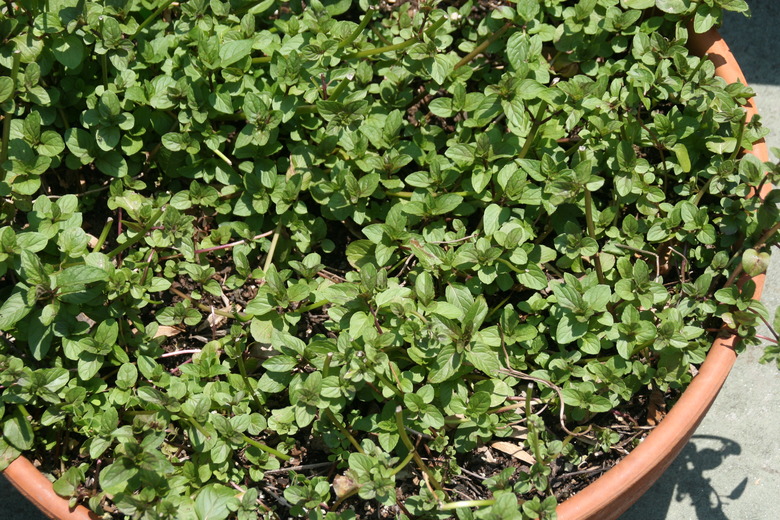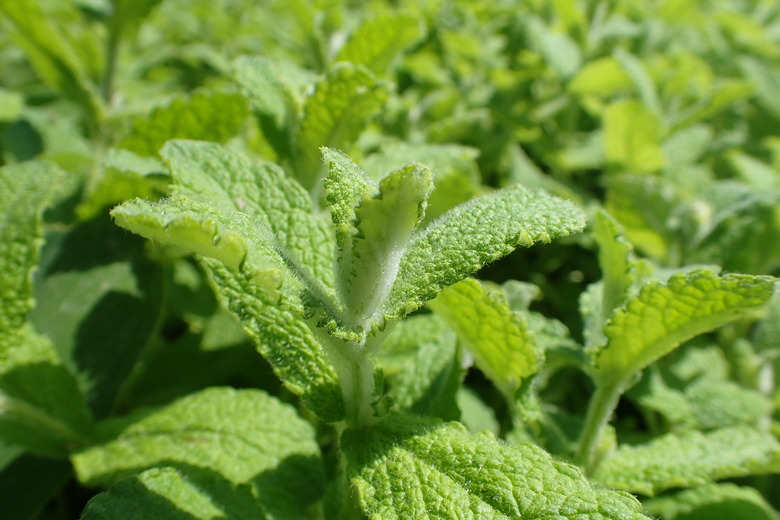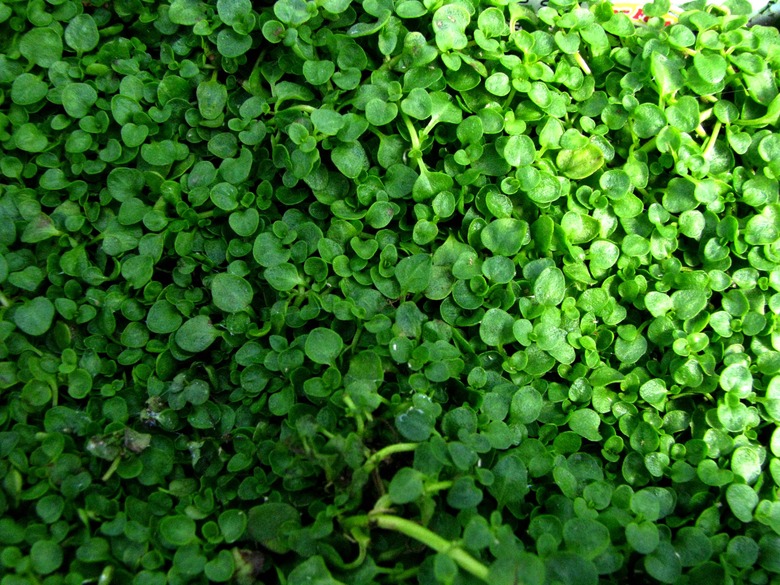How To Identify Mint Plants
Mint leaves are among the most popular culinary herbs. They are used in fruit salads, teas and candies and are also used as garnishes, among many other culinary purposes. They are also used in potpourri, to flavor toothpaste and to add scent to soaps.
Identifying the approximately 20 species of mint (Mentha spp.) in the Lamiaceae family is possible by looking at the leaves and flowers.
Identifying Spearmint Plants
Spearmint (Mentha spicata, USDA plant hardiness zones 4 to 11) is one of the most popular types of mint. You can tell spearmint plants apart from other mint plants because unlike most mint plants, they have barely any hairs on their leaves, which are medium green.
Plants of this species produce small white or pink flowers. The leaves are sessile, meaning that there is no real petiole that attaches them to the stems.
Kentucky Colonel (Mentha spicata 'Kentucky Colonel,' zones 5 to 9) is a popular spearmint cultivar.
Tip
While they can be grown as groundcover, mint plants self-seed aggressively and tend to become invasive. Therefore, they are best grown in containers to keep them from taking over your garden.
What Does Peppermint Look Like?
One of the most popular varieties of mint is peppermint (Mentha × piperita, zones 5 to 9), which is a natural hybrid between water mint (Mentha aquatica, zones 5 to 9) and spearmint that is native to Europe.
Peppermint has dark green leaves that are 1 to 2 inches in length. The leaves of this species are lance-shaped with a rounded point. The edges of the leaves are toothed. Peppermint plants produce pink or lavender flowers in summer.
Peppermint Cultivars: Lemon Mint and Chocolate Mint
Lemon mint (Mentha × piperita f. citrata, zones 5 to 9) is a variety of peppermint with a citrusy scent and a similar appearance. It is sometimes referred to as orange mint.
Another cultivar of this plant is known as chocolate mint (Mentha × piperita f. citrata 'Chocolate,' zones 5 to 9) because it has a subtle chocolate-like scent.
Different Mint Types
In addition to spearmint and peppermint, other mint types are used in cooking, including apple mint (Mentha suaveolens, zones 5 to 9) and Corsican mint (Mentha requienii, zones 6 to 9).
Apple Mint
Native to Europe, apple mint has light green leaves that are about 2 inches long. Its flowers may be pink or white. This type of mint has a fruity scent.
Pineapple mint (Mentha suaveolens 'Variegata,' zones 5 to 9) is a cultivar of apple mint that can be differentiated from the species plant by its variegated leaves. The foliage of pineapple mint is sessile.
Corsican Mint
Native to Corsica, Italy and Sardinia, Corsican mint is smaller than other types of mint, with a height of less than 1 inch. The leaves are round and about 1/8 inch long. This species produces lilac-colored leaves; however, they are so small that they are easily missed.
Corsican mint is the type of mint commonly used in an alcoholic beverage known as creme de menthe.
References
- PlantVillage: Mint
- North Carolina State Extension: Mentha spicata
- Missouri Botanical Garden: Mentha x piperita
- Missouri Botanical Garden: Mentha suaveolens
- Missouri Botanical Garden: Mentha x piperita f. citrata
- University of Wisconsin-Madison Extension: Pineapple Mint – Mentha suaveolens 'Variegata'
- Missouri Botanical Garden: Mentha x piperita f. citrata 'Chocolate'
- Missouri Botanical Garden: Mentha requienii
- Midwest Invasive Species Information Network: Water Mint
